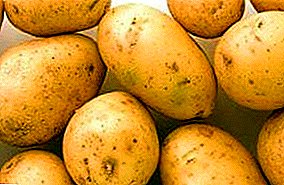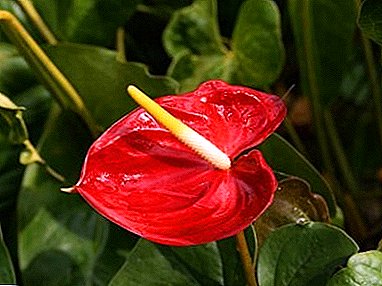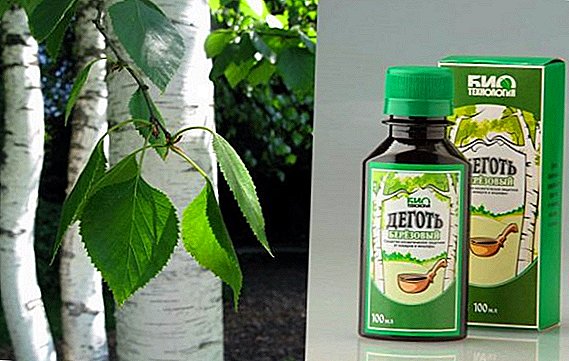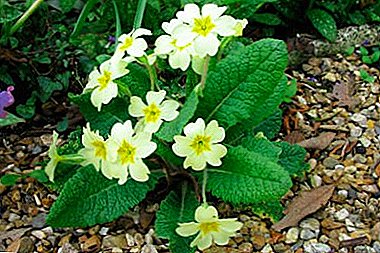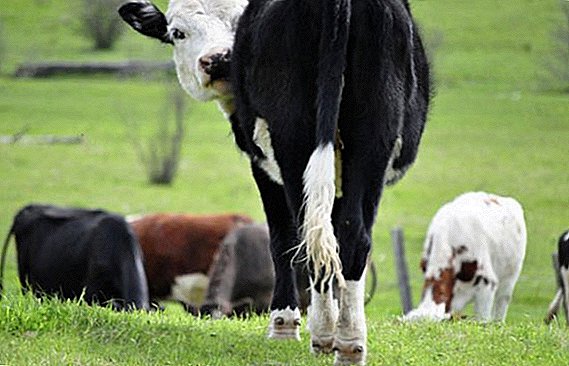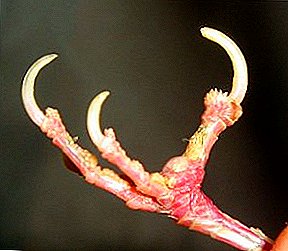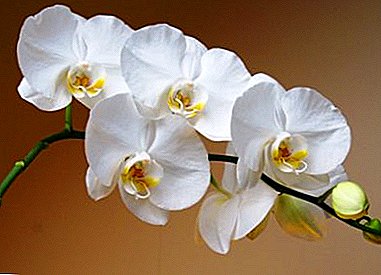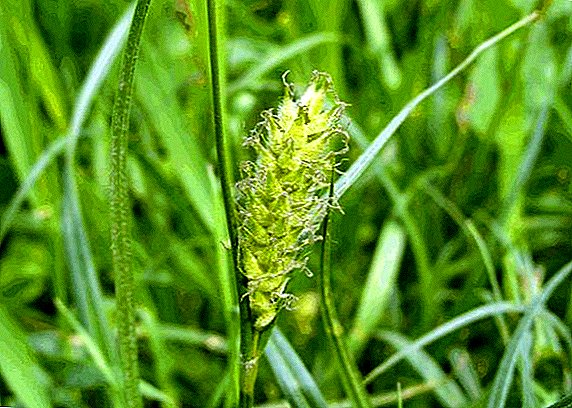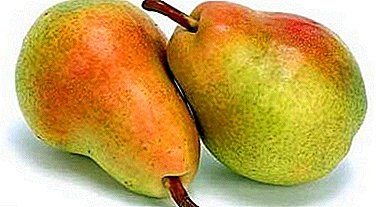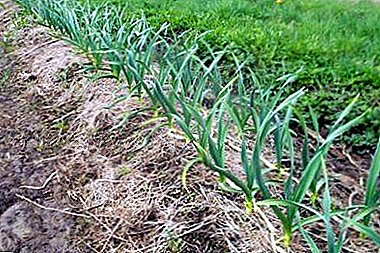
Garlic is a perennial plant of the Amaryllis family. Due to its spicy taste, spicy smell and the mass of healthy qualities, this vegetable crop is popular almost everywhere.
Often used in medicine as an antiseptic. Garlic is often used as a means of parasites, not only adults but also children.
Read the article on how to properly organize competent plant care in the spring or at other times of the year at home to achieve maximum yield.
The importance of competent care
Garlic is an unpretentious plant, but it needs competent care. Garlic yield depends on it: with proper care, it will be quite high - up to 300 kg per one hundred square meters per season (depending on the type of garlic). Also, the quality of care affects the storage duration of the harvested crop, which is especially significant when growing garlic for sale.
Improper care can lead to a deterioration in the quality of the final product - heads (garlic bulbs) can be small and unevenly filled, hollow, cloves sluggish and yellow. Inadequate care of the plant will make it more vulnerable to various diseases and pests.
Features
Unlike some other vegetables, garlic is uncomfortable in acidic soil, so its acidity is artificially lowered. Fresh organic fertilizers are contraindicated to the plant - their use can lead to the defeat of the bulb by fungus, the oppression of its development. The garlic is moisture-loving: it needs abundant and regular watering. It tolerates growing in the open under the sunlight.
 Procedures used in the care:
Procedures used in the care:
- Mulching - Dip garlic at the base of the stem with straw, faded herbs or compost. It is used as a natural fertilizer and to prevent too rapid evaporation of moisture. Allows you to slow the growth of weeds. In the rainy season do not produce mulching.
- Hilling - the process of scavenging soil around the stem, up to about a third of its height. This will speed up the ripening process of the heads, allow moisture to stay longer in the soil, and in winter protect garlic from freezing.
- Watering. The most abundant hydration of garlic is necessary during the formation of bulbs. In the summer, the plant is watered once in 7-10 days, in periods of drought - once in 5 days. In rainy time, watering should stop. In winter, the garlic is not watered.
- Fertilizer - additional feeding. For garlic, top dressing is combined with watering. For the entire vegetative period, fertilizers are applied no more than three times. Additionally fed before winter and after it (for winter garlic).
- Antiparasitic treatment - The procedure for protecting plants from pests. Special means are used both for prophylactic purposes and in case of a clear defeat of garlic by the parasite.
Approximately three weeks before harvesting, watering is stopped.
Growing conditions:
- Temperature. Planting is carried out at low temperatures, and for growing optimum thermometer performance - 23-28 degrees Celsius. However, the heat with proper watering tolerates garlic adequately.
- The soil for growing should be easy, with a neutral indicator of acidity. If the soil is acidified, dolomite flour or lime is added to it, which helps to reduce acidity.
- Lighting. Garlic prefers an open area, direct sunlight does not pose a great danger to it (but do not forget about watering and mulching procedure). But when grown in the shade of productive heads will be small. The most suitable light balance for the place of planting garlic is partial shade.
How to care?
At home
Garlic is often grown to produce leaves. When growing a house, the garden soil can only act as the basis of the substrate, since watering in a pot will make it too dense and will wash nutrients. Sand and peat are suitable as an additional component for soil mixture.
It will be useful to add wood ash. You can buy in the store ready soil mixture for seedlings and enrich it with fertilizer for garlic and onions. The depth of the pot for planting - not less than 20-25 cm. The distance between the teeth is 4-5 cm, while in the open field it should be at least 15 cm.
If there is insufficient sunlight, fluorescent lighting can be used. Watering should be done at least once every 3 days. Unlike garlic in the garden, home needs nitrogen fertilizer. The optimum temperature for growing is 16-20 degrees.
In the greenhouse
The soil should be more nutritious and more fertile than in the garden, before planting garlic it is necessary to make mineral and organic fertilizers. In greenhouse cultivation, it is easier to control the level of humidity and temperature. Loosening the soil will have more often: in the greenhouse, it is pressed faster. It is not necessary to produce mulching, they pour garlic in the same way as in open ground, but a little less. In winter, greenhouse garlic may well continue its active existence, therefore, care for him at this time does not stop.
How to care depending on the time of year?
In the autumn
In autumn, winter garlic is planted.
 Landing is made in the beginning or in the middle of October. If garlic is grown in a greenhouse, you should only reduce the frequency of watering and spud the plant, but otherwise continue to care in accordance with the stage of development of garlic.
Landing is made in the beginning or in the middle of October. If garlic is grown in a greenhouse, you should only reduce the frequency of watering and spud the plant, but otherwise continue to care in accordance with the stage of development of garlic.
- Go through the teeth for sowing.
- Disinfect seed.
- Select an open, unencrypted place. Ensure that it is protected from strong drafts.
- To land the teeth in the prepared grooves to a depth of 12-15 cm, with an interval of 15-20 cm (it is recommended to water the grooves beforehand).
- Sprinkle garlic with earth and level it.
- Mulch the bed with sawdust, straw or peat.
- Cover with dry branches (to protect from birds).
We offer to watch a video on how to properly plant and care for garlic in the fall:
Spring to have a good harvest
- After the snow has come down, remove the layer of mulch from the seedlings.
- Loosen the soil with a rake. Introduce top dressing.
- After 2 weeks of deep weeding.
- Form around the stems of the hole.
- After some time, carry out mulching with rotted manure or peat.
- Start watering in 2-3 weeks after the snow melts (as the soil dries out).
Reference. In the spring, immediately after winter, if the leaves turn yellow as a result of night frosts, it is recommended to treat the plant with a solution of special stimulants. Spring garlic is only planted in the spring - in late April or early May.
We offer you to watch a video about spring garlic care:
Summer
- Water once every 10 days, more often in drought. Rainy summer - only as the soil dries.
- During the summer, 2 times the plant must be fertilized.
- During a severe drought in a completely open area, garlic will benefit from it.
- When the arrows appear, remove them. This will somewhat slow the ripening of garlic. If we neglect to remove the arrow, the bulb will form a small one.
- As required to produce antiparasitic treatment.
In winter
- For greenhouse or indoor garlic continue to care as usual, depending on the stage of development.
- Winter garlic is planted in the fall, at the beginning of winter the condition of the garden is checked, mulching is carried out (if it was not carried out immediately after planting).
- In winter, the plant does not need watering or fertilizing.
- Spring garlic is not grown in winter.
Possible mistakes and struggle with them
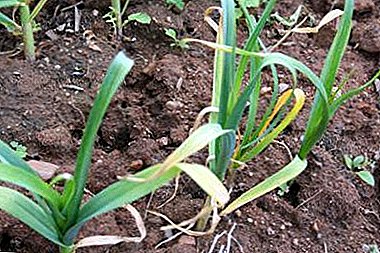 Excess water. Leads to decay, which can be detected by checking one plant. If signs of overflowing are available - remove damaged plants.
Excess water. Leads to decay, which can be detected by checking one plant. If signs of overflowing are available - remove damaged plants.- Postponing harvesting dates. Will lead to decay cloves. Garlic is ready to be harvested immediately after the leaves turn yellow.
- Growing garlic from seeds and cloves on one plot. Discrepancies between terms and conditions will lead to confusion and poor-quality care. Seeds and cloves need seedling.
- Nitrogen fertilization. It is appropriate only in rare cases with greenhouse or indoor growing - in the garden, however, leads to a reduction in the shelf life of the crop.
- Landing on the devastated soil. In spring and autumn, the land in the plots must be fertilized.
- Shading area. The shade should not overlap the bed. For planting choose an open area.
Garlic is a unique plant. This is an excellent seasoning, giving expression to good dishes, and an effective means to strengthen the immune system. Garlic is used to treat many diseases. He is unpretentious in the care and is available to everyone, and you can grow it even on the windowsill.


 Excess water. Leads to decay, which can be detected by checking one plant. If signs of overflowing are available - remove damaged plants.
Excess water. Leads to decay, which can be detected by checking one plant. If signs of overflowing are available - remove damaged plants.